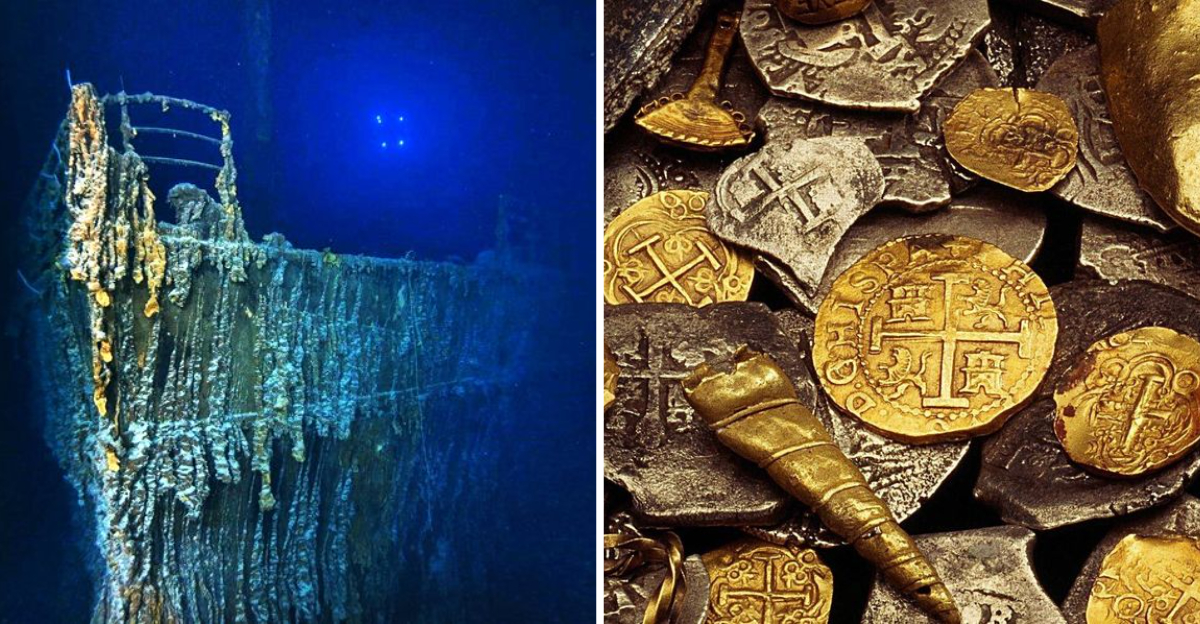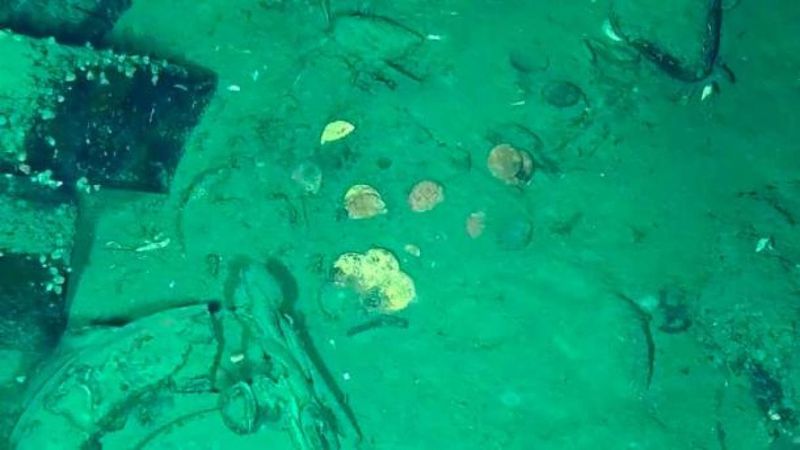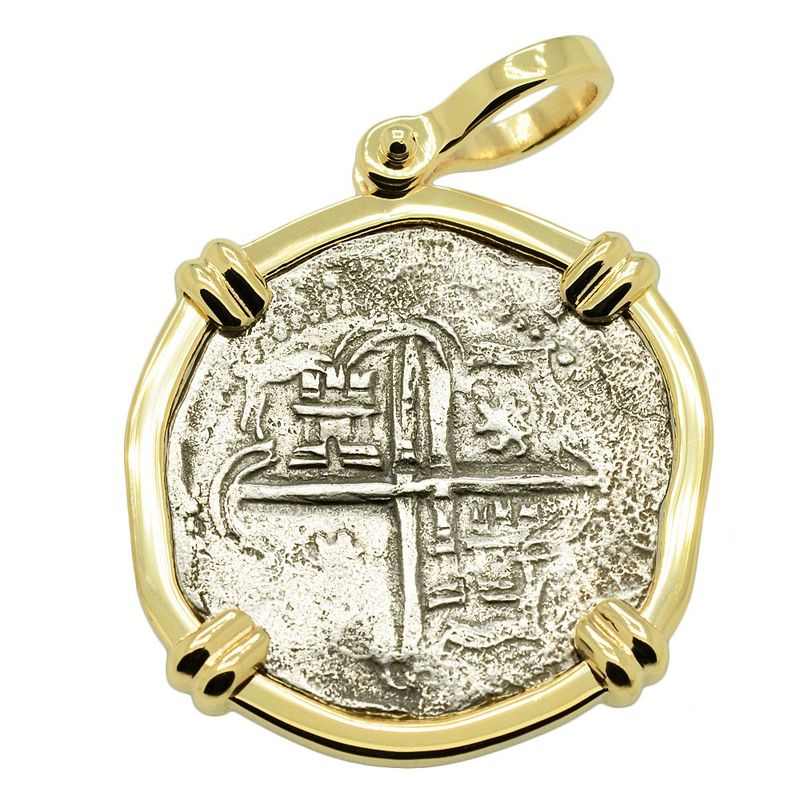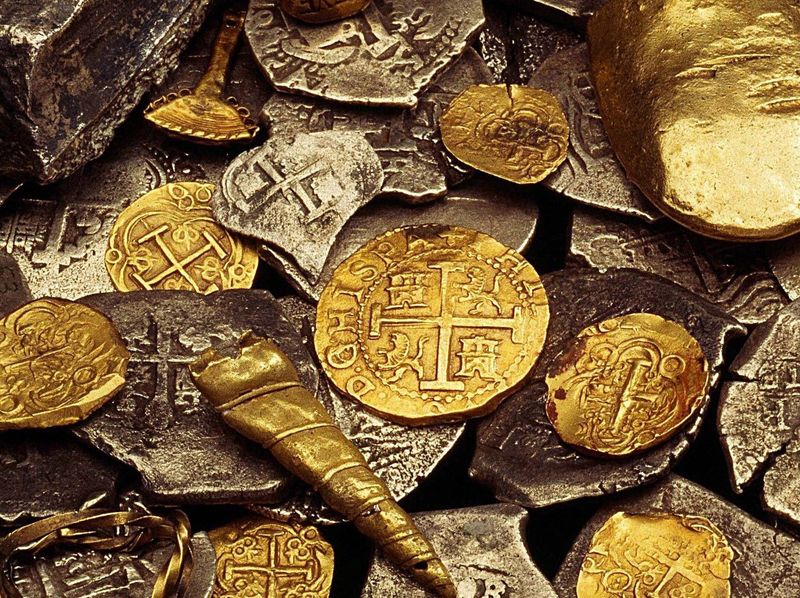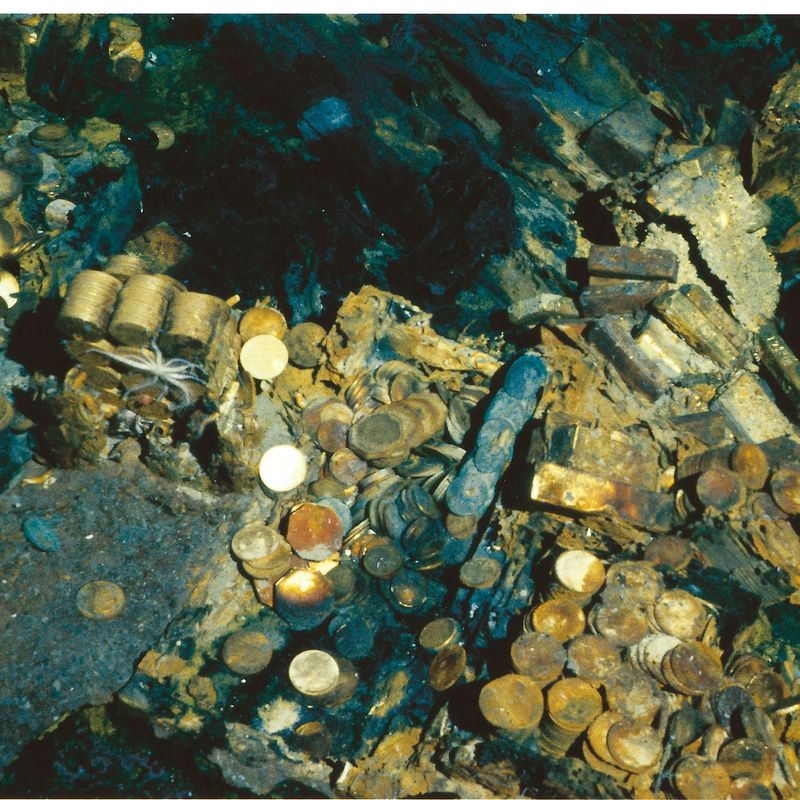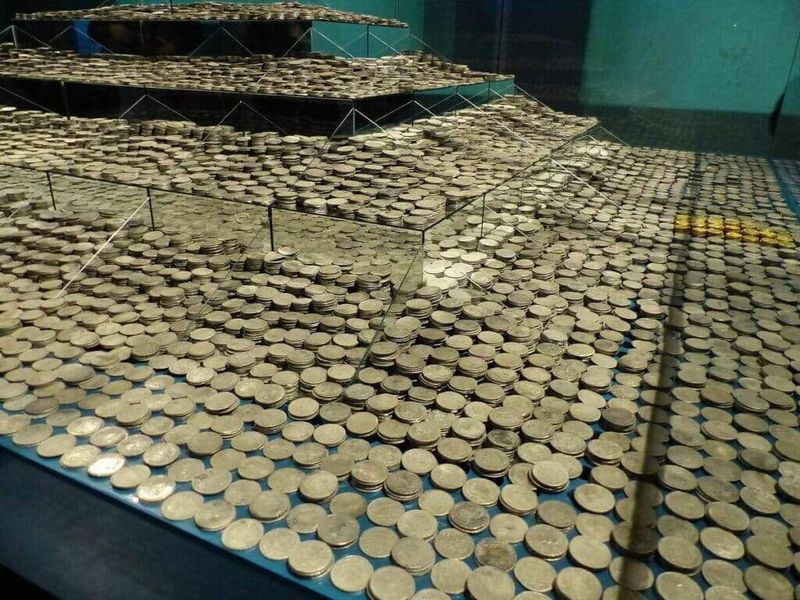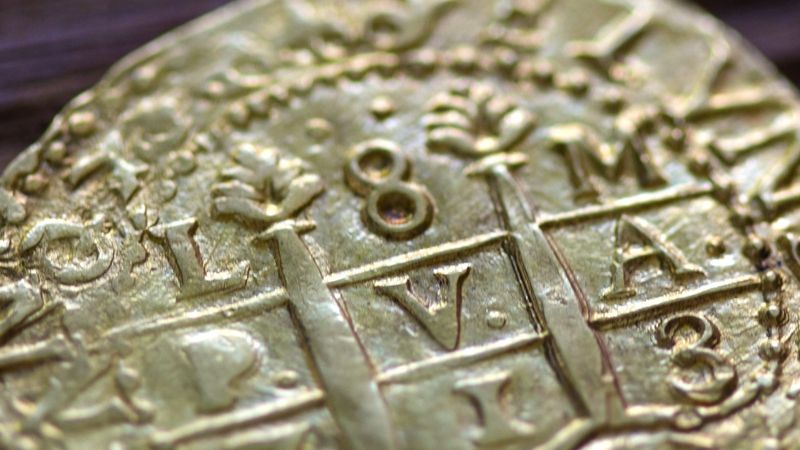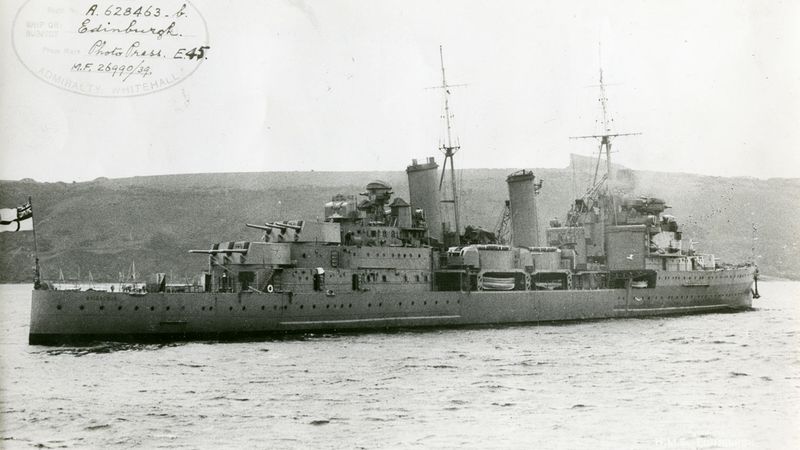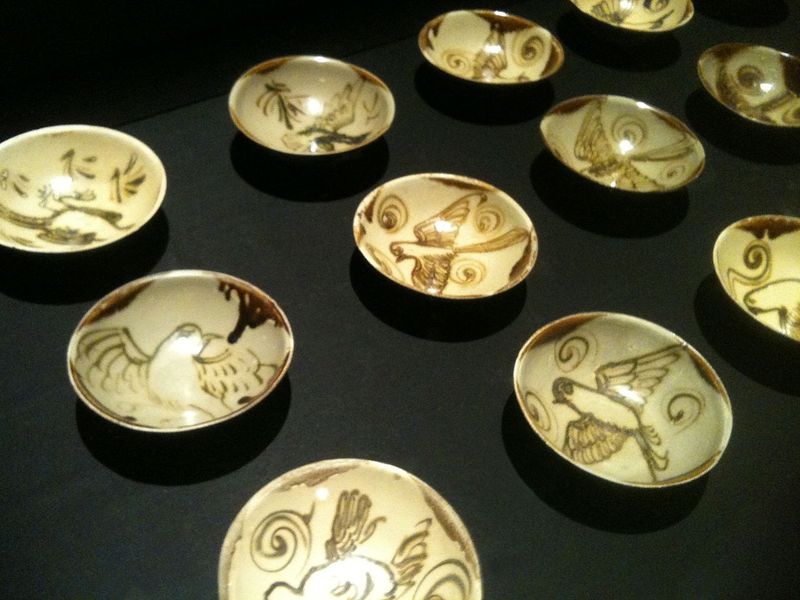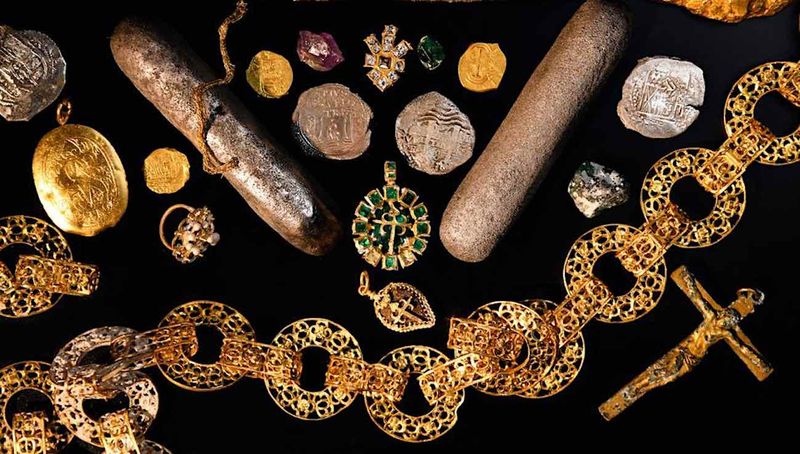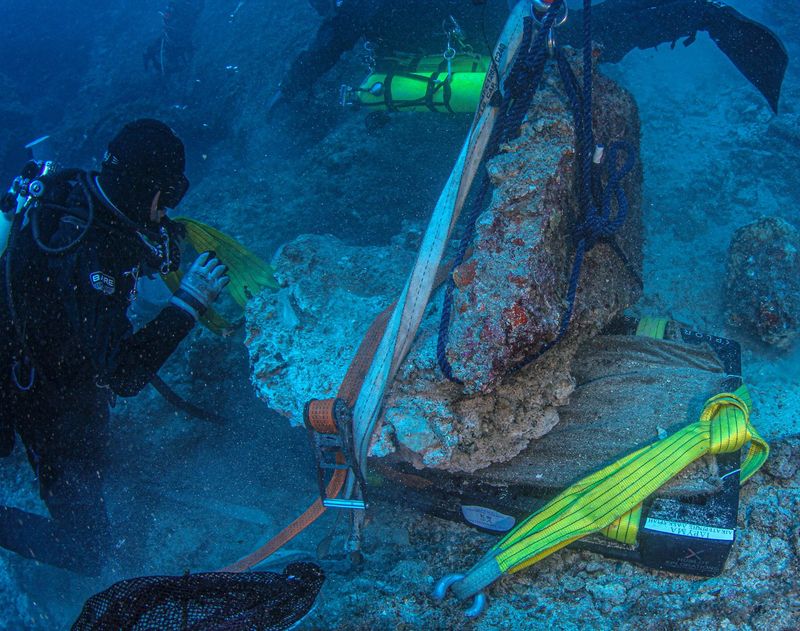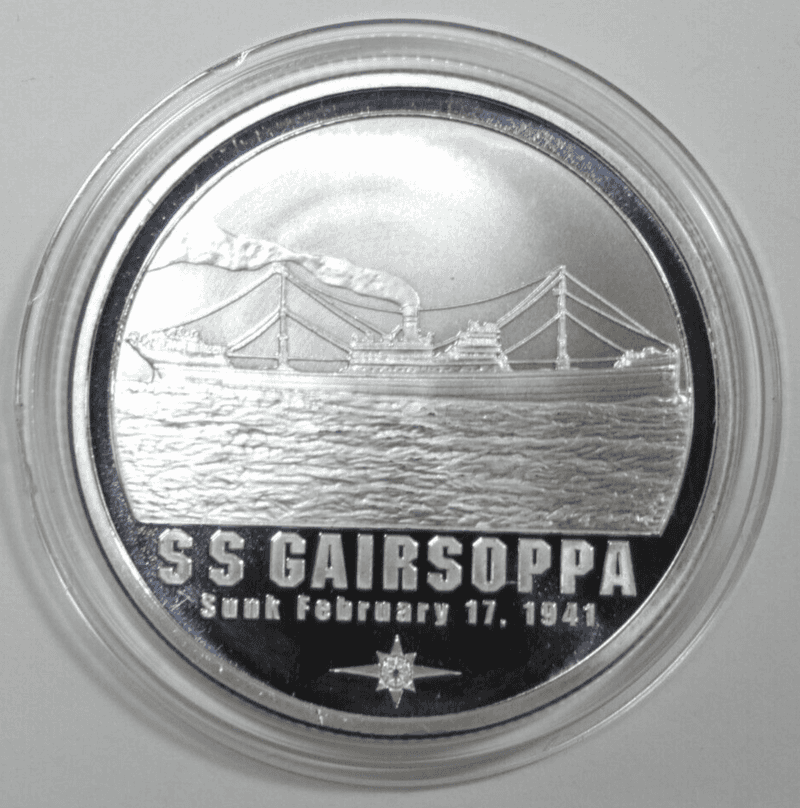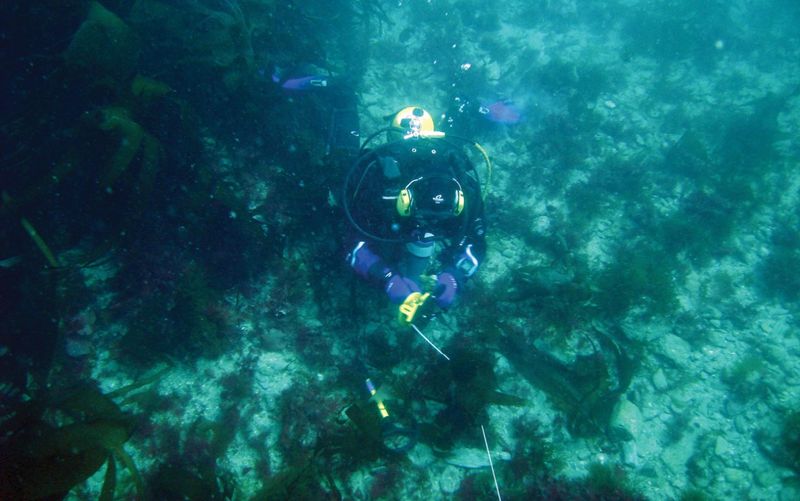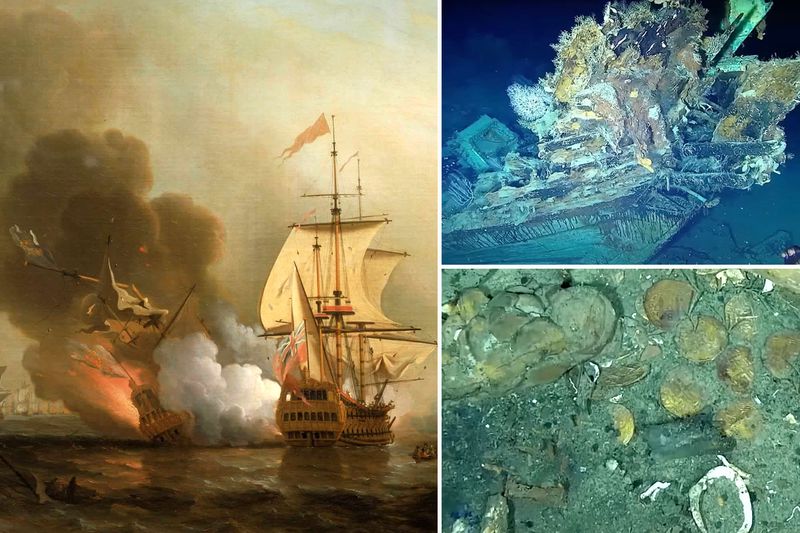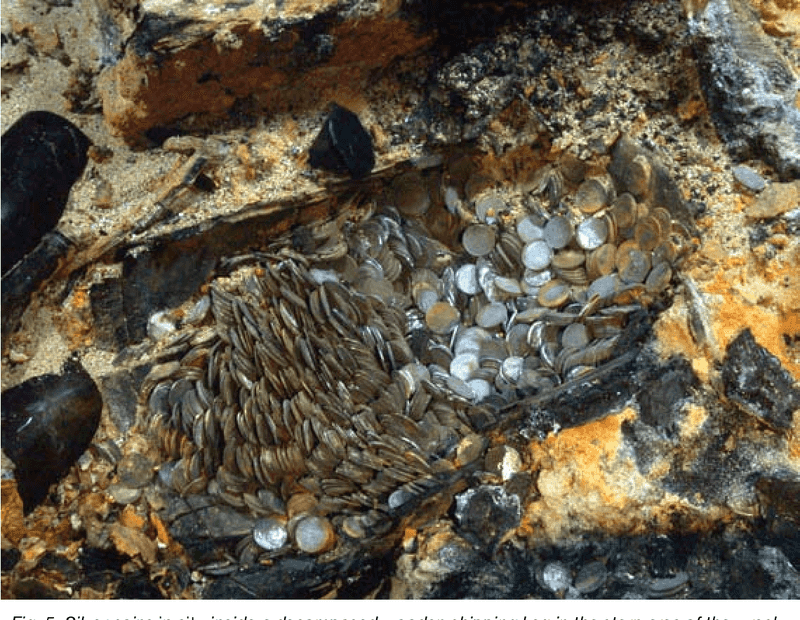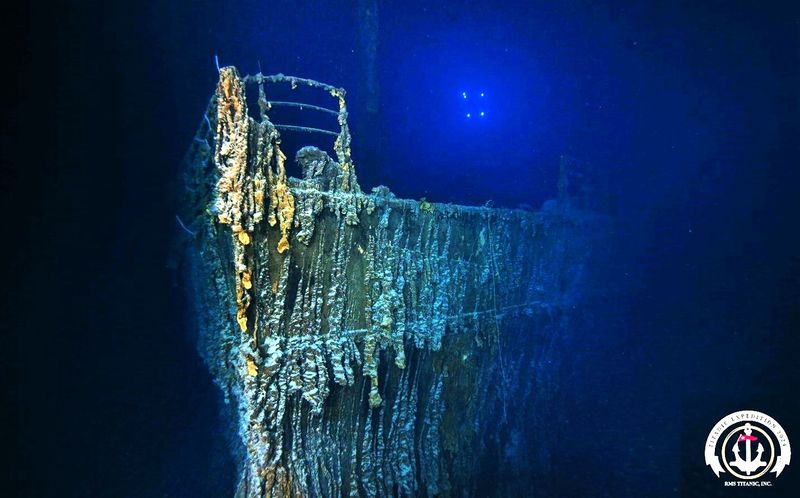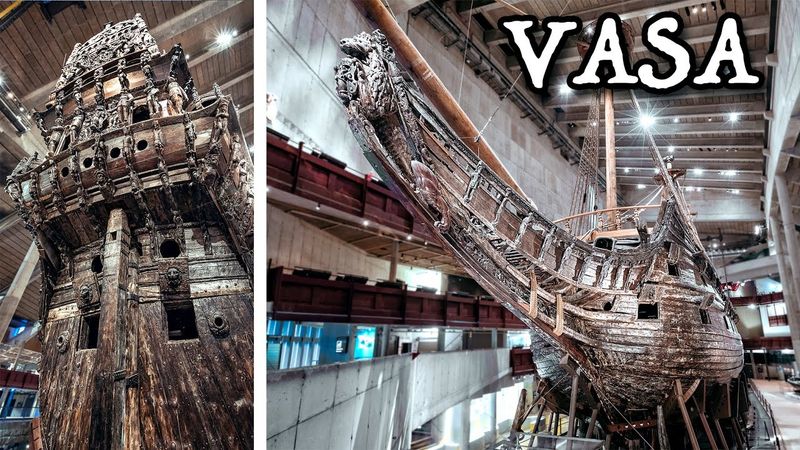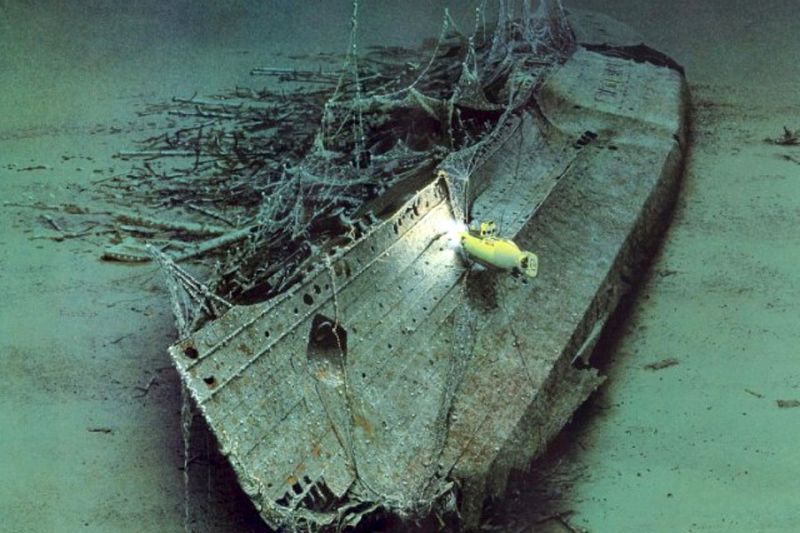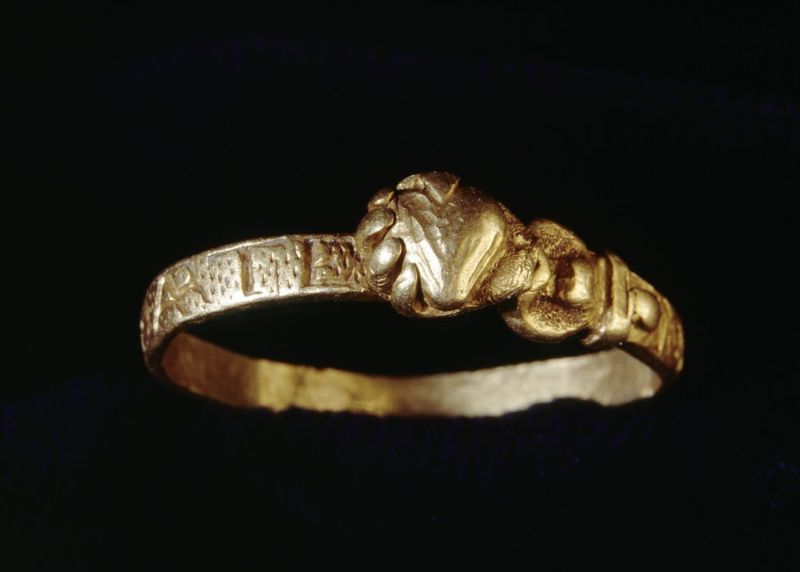Shipwrecks have long captured the imagination of treasure hunters and historians alike. With the depths of the oceans hiding a wealth of artifacts and riches from bygone eras, the allure of discovering lost treasures is irresistible.
The following is a list of 20 of the most valuable shipwreck treasures ever found, each with its own unique story and historical significance.
1. San José (1708)
The San José, a Spanish galleon, met its watery fate off Cartagena, Colombia, in 1708. Believed to harbor treasures worth up to $20 billion, including gold, silver, and emeralds, it remains one of the most coveted shipwrecks. The site was discovered in 2015, sparking international legal disputes over ownership.
Efforts to recover the treasure have been hampered by these ongoing legal battles. The ship’s loss is a stark reminder of the perils faced by treasure-laden galleons navigating perilous waters during the Age of Sail. Today, the San José remains a tantalizing prize for treasure seekers.
2. Nuestra Señora de Atocha (1622)
The Nuestra Señora de Atocha, a Spanish galleon, sank in 1622 near the Florida Keys during a hurricane. It carried an estimated $400 million in riches, including silver bars, gold, and emeralds. Treasure hunter Mel Fisher famously discovered the wreck in 1985, ending a 16-year pursuit. The Atocha’s discovery was a watershed moment in underwater archaeology.
The artifacts retrieved offer a glimpse into the opulence of Spanish maritime ventures. Today, the Atocha stands as a testament to the relentless human quest for lost treasures and the enduring mysteries of the ocean’s depths.
3. Whydah Gally (1717)
The Whydah Gally, once a slave ship, was captured by infamous pirate Captain Samuel Bellamy. In 1717, it sank off Cape Cod, Massachusetts, during a nor’easter, laden with plundered treasures. Discovered in 1984 by explorer Barry Clifford, the wreck revealed an estimated $400 million in gold and silver coins. The Whydah is celebrated as the only authenticated pirate shipwreck ever found in North America.
Its treasures provide a rare insight into pirate life and the Atlantic slave trade. The Whydah’s story is a dramatic chapter in the colorful history of piracy.
4. SS Central America (1857)
Known as the “Ship of Gold,” the SS Central America was a sidewheel steamer that sank during a hurricane in 1857 off the South Carolina coast. It was carrying gold valued at approximately $100 million, contributing to a financial panic in the U.S. The wreck was located in 1988, and recovery efforts have since unearthed significant quantities of gold coins and bars.
This find has intrigued historians and treasure hunters alike. The SS Central America remains a symbol of the 19th-century Gold Rush era and the unexpected paths of fortune.
5. Black Swan Project (1804)
The Black Swan Project, orchestrated by Odyssey Marine Exploration, uncovered a massive trove of treasure in 2007. Believed to originate from the Spanish frigate Nuestra Señora de las Mercedes, which sank in 1804, this haul included 17 tons of silver coins, valued at around $500 million.
The discovery ignited a heated legal battle with Spain, which ultimately reclaimed the treasure. This find highlights the complexities of maritime law and national heritage rights. The Black Swan Project serves as a reminder of the delicate balance between exploration and cultural patrimony.
6. Flor de la Mar (1511)
The Flor de la Mar, a Portuguese vessel, met its end in 1511 off the coast of Sumatra, Indonesia. Laden with treasures from the Malacca Sultanate, it’s estimated to hold a fortune worth around $2 billion. Despite numerous searches, the wreck remains elusive, fueling its legend as one of the most sought-after treasures in maritime history.
The Flor de la Mar’s story captures the imagination of treasure hunters worldwide. Its riches symbolize the wealth and ambition of the Age of Exploration, remaining a tantalizing mystery beneath the waves.
7. Merchant Royal (1641)
The Merchant Royal, an English ship, sank in 1641 near Cornwall, England, earning the nickname “El Dorado of the Seas.” It was reportedly carrying gold and silver now valued at approximately $1 billion. Despite extensive efforts, the precise location of the wreck remains undiscovered.
The Merchant Royal continues to intrigue adventurers and treasure seekers, embodying the mysteries of the deep. Its legacy lies in the enduring quest for underwater riches and the tantalizing prospect of uncovering a piece of history. The ship’s story is a beacon for the adventurous at heart.
8. HMS Edinburgh (1942)
The HMS Edinburgh, a British warship, was sunk in 1942 during World War II in the Barents Sea. It was transporting Soviet gold to the UK, a cargo valued at approximately $100 million. In 1981, a daring salvage operation recovered a significant portion of this gold.
The Edinburgh’s story is one of wartime peril and high-stakes recovery. It highlights the strategic importance of gold in wartime and the risks taken to secure it. The salvage operation remains a notable achievement in the annals of underwater recovery efforts.
9. Belitung Shipwreck (circa 830 AD)
The Belitung Shipwreck, discovered in 1998 off the coast of Indonesia, dates back to around 830 AD. This Arabian dhow was laden with Tang dynasty artifacts, including ceramics and gold, valued at hundreds of millions of dollars. The find is a treasure trove of historical artifacts, offering insights into ancient maritime trade routes between the Arab world and Asia.
The Belitung Shipwreck is celebrated for its contribution to our understanding of early global trade networks. The artifacts recovered continue to fascinate historians and collectors worldwide, bridging cultures through time.
10. Nuestra Señora de las Maravillas (1656)
The Nuestra Señora de las Maravillas, a Spanish galleon, sank in 1656 off the Bahamas while carrying New World treasures. Recent expeditions have recovered over 10,000 artifacts, including gold chains and silver bars, providing valuable insights into its historical significance. The Maravillas is emblematic of the perilous voyages undertaken during the Spanish Empire’s quest for wealth.
The artifacts unearthed offer a window into the opulence and risks of transatlantic treasure fleets. Today’s ongoing discoveries continue to reveal the ship’s secrets, captivating enthusiasts and historians alike.
11. Antikythera Shipwreck (circa 1st century BC)
The Antikythera Shipwreck, located off the Greek island of Antikythera, dates back to the 1st century BC. Discovered in 1900, it contained the Antikythera mechanism, an ancient analog computer, along with statues and jewelry. This find has captivated archaeologists and historians for over a century.
The mechanism, in particular, has been the subject of extensive research, revealing the technological prowess of the ancient Greeks. The Antikythera Shipwreck is a testament to the rich maritime history of the Mediterranean and continues to intrigue scholars and enthusiasts alike.
12. SS Gairsoppa (1941)
The SS Gairsoppa was a British cargo ship torpedoed during World War II, sinking in 1941. Found in 2011, the wreck yielded over 48 tons of silver, valued at approximately $38 million. The Gairsoppa’s discovery was a significant achievement in deep-sea recovery operations. It highlights the risks faced by merchant vessels during wartime and the enduring allure of lost treasures.
The silver haul not only enriched our understanding of wartime shipping but also provided a tangible link to the past. The Gairsoppa’s story is a compelling chapter in maritime history.
13. Salcombe Shipwreck (circa 1300 BC)
The Salcombe Shipwreck, dating back to circa 1300 BC, was discovered off the coast of England. This Bronze Age shipwreck contained weapons and jewelry, offering valuable insights into ancient trade routes. The artifacts uncovered suggest a connection between the British Isles and continental Europe during this era.
The Salcombe Shipwreck is celebrated for its contribution to our understanding of prehistoric trade and cultural exchanges. The treasures found continue to spark interest among archaeologists and historians, revealing the rich tapestry of early human civilization and maritime exploration.
14. San José (1708)
The San José, a Spanish galleon, met its watery fate off Cartagena, Colombia, in 1708. Believed to harbor treasures worth up to $20 billion, including gold, silver, and emeralds, it remains one of the most coveted shipwrecks. The site was discovered in 2015, sparking international legal disputes over ownership.
Efforts to recover the treasure have been hampered by these ongoing legal battles. The ship’s loss is a stark reminder of the perils faced by treasure-laden galleons navigating perilous waters during the Age of Sail. Today, the San José remains a tantalizing prize for treasure seekers.
15. SS Republic (1865)
The SS Republic, a sidewheel steamship, sank in 1865 off the coast of Georgia, USA. Discovered in 2003, it was found with a treasure of gold and silver coins valued at over $75 million. The Republic’s story is one of maritime commerce and disaster during the post-Civil War era. The coins recovered reflect the economic conditions and tumultuous times of 19th-century America.
The SS Republic is a fascinating study of the interplay between commerce and catastrophe, offering a rich narrative for historians and treasure hunters alike.
16. Tek Sing (1822)
The Tek Sing, a Chinese junk, sank in 1822 in the South China Sea, claiming the lives of over 1,600 people. Discovered in 1999, it was found with a vast cargo of porcelain, earning it the moniker “Titanic of the East.” The wreck underscores the risks associated with maritime trade routes.
The porcelain recovered has been valued in the millions and offers insights into 19th-century Chinese craftsmanship. The Tek Sing shipwreck is pivotal in understanding China’s maritime history and the perils of long-distance sea voyages. The tragedy is a poignant reminder of human vulnerability at sea.
17. Titanic (1912)
The RMS Titanic, perhaps the most famous shipwreck in history, sank in 1912 after hitting an iceberg in the North Atlantic. Discovered in 1985, its wreckage revealed luxury artifacts and personal items, valued at millions. The Titanic’s story is a poignant tale of human ambition and tragedy.
The luxurious ocean liner epitomized early 20th-century opulence and engineering prowess. The artifacts recovered continue to captivate the public imagination, symbolizing the fragile boundary between human achievement and nature’s might. The Titanic remains a touchstone in maritime history and a somber reminder of unforeseen disaster.
18. Vasa (1628)
The Vasa, a Swedish warship, sank on its maiden voyage in 1628, just minutes after leaving Stockholm harbor. Raised in 1961, the ship was found remarkably well-preserved due to the cold Baltic waters. The Vasa’s ornate carvings and towering masts offer a glimpse into 17th-century shipbuilding and warfare.
The wreck has become a symbol of Sweden’s maritime heritage, now housed in a dedicated museum in Stockholm. The Vasa’s story is one of ambition and failure, capturing the imagination of visitors worldwide. It serves as a poignant lesson in the perils of hubris.
19. Lusitania (1915)
The RMS Lusitania was torpedoed by a German U-boat in 1915, sinking off the coast of Ireland and claiming 1,198 lives. The wreck became a pivotal event in World War I, influencing public opinion against Germany.
Discovered in 1935, the site has yielded wartime artifacts and personal belongings, offering a window into the era’s maritime conflict. The Lusitania’s sinking remains a touchstone in the history of warfare at sea. The artifacts recovered continue to evoke the human cost of naval warfare and the complex interplay of politics and maritime strategy.
20. Spanish Armada Shipwrecks (1588)
The Spanish Armada, a fleet sent by King Philip II of Spain in 1588, met disaster off the coast of Ireland. Storms and battles decimated the Armada, leading to numerous shipwrecks. Over the centuries, these sites have yielded cannons, coins, and other artifacts, providing insights into this pivotal historical event.
The Armada’s wrecks are emblematic of the era’s naval warfare and European power struggles. The finds continue to reveal the harsh realities faced by sailors and the ambitions of empires. Today, the Spanish Armada shipwrecks remain a symbol of maritime history and conflict.
